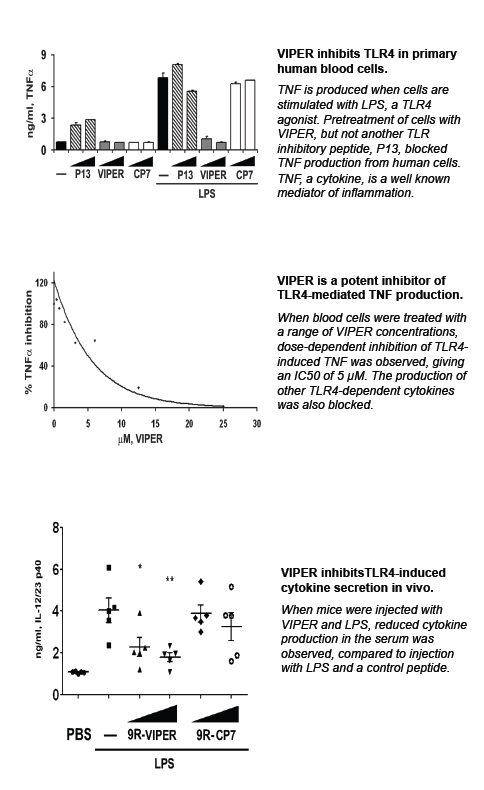
Cat. #151125
Anti-Keratin 5/6/18 [LP34]
Cat. #: 151125
Sub-type: Primary antibody
Unit size: 100 ug
Availability: 3-4 weeks
Target: Keratin 5/6/18 (pan-epithelial)
Class: Monoclonal
Application: ELISA ; IHC ; IF ; WB
Reactivity: Human
Host: Mouse
£300.00
This fee is applicable only for non-profit organisations. If you are a for-profit organisation or a researcher working on commercially-sponsored academic research, you will need to contact our licensing team for a commercial use license.
Contributor
Inventor: Birgit Lane
Institute: Cancer Research UK, London Research Institute: Clare Hall Laboratories
Tool Details
*FOR RESEARCH USE ONLY (for other uses, please contact the licensing team)
- Name: Anti-Keratin 5/6/18 [LP34]
- Research fields: Cell signaling and signal transduction
- Clone: LP34
- Tool sub type: Primary antibody
- Class: Monoclonal
- Conjugation: Unconjugated
- Molecular weight: 10 kDa
- Strain: Balb/c
- Reactivity: Human
- Host: Mouse
- Application: ELISA ; IHC ; IF ; WB
- Description: Monoclonal antibody with broad reactivity against human keratins 5,6 and 18.
- Immunogen: Detergent-insoluble fraction of psoriatic human epidermis
- Immunogen uniprot id: P05783
- Isotype: IgG1
- Myeloma used: Sp2/0-Ag14
- Recommended controls: Human skin
Target Details
- Target: Keratin 5/6/18 (pan-epithelial)
- Molecular weight: 10 kDa
- Tissue cell line specificity: Human skin
- Target background: Keratins 5, 6 are members of type II keratins family that are specifically expressed in the inner root sheath of hair follicles. Keratins demonstrate tissue and differentiation specific expression profiles. The type II cytokeratins consist of basic or neutral proteins which are arranged in pairs of heterotypic keratin chains co-expressed during differentiation of simple and stratified epithelial tissues. Keratin 18 is member of the type I intermediate filament chain keratin 18. Keratin 18, together with its filament partner keratin 8, are perhaps the most commonly found members of the intermediate filament gene family. These cytokeratins have been reported to be expressed in tumour cells of epithelial origin and less commonly of mesothelial origin, however non-epithelial tumours, e.g. lymphomas, do not express these cytokeratins. Anti-keratin 5/6/18 (LP34) shows a broad pattern of reactivity with human epithelial tissues, from simple glandular epithelia to stratified squamous epithelia. Epithelial cells are labelled whether they are ectodermal, mesodermal, or endodermal in origin. However, the recognition of cytokeratin 18 on paraffin sections using this antibody may be variable.
Applications
- Application: ELISA ; IHC ; IF ; WB
Handling
- Format: Liquid
- Concentration: 1 mg/ml
- Unit size: 100 ug
- Storage buffer: PBS with 0.02% azide
- Storage conditions: Store at -20° C frozen. Avoid repeated freeze / thaw cycles
- Shipping conditions: Shipping at 4° C
References
- Barton et al. 2009. Neurosci Lett. 455(1):60-4. PMID: 19429107.
- ELP3 localises to mitochondria and actin-rich domains at edges of HeLa cells.
- Gardiner et al. 2008. Neuroscientist. 14(3):240-50. PMID: 18270312.
- Defects in tongue papillae and taste sensation indicate a problem with neurotrophic support in various neurological diseases.
- Karashima et al. 2002. J Cell Sci. 115(Pt 24):5027-37. PMID: 12432088.
- Interaction of periplakin and envoplakin with intermediate filaments.
- Braun-Falco et al. 1999. Gene Ther. 6(3):432-41. PMID: 10435093.
- Efficient gene transfer into human keratinocytes with recombinant adeno-associated virus vectors.
- Taylor-Papadimitriou et al., 1987. Keratin expression in the mammary gland. In, The Mammary Gland: Development, Regulation and Function, M.C. Neville and C. Daniel (Eds). Plenum Pub. Corp. 1987, 181-215.
- Taylor-Papadimitriou et al., 1983. Cell lineages and interactions in neoplastic expression in the human breast. In, "Understanding Breast Cancer: Clinical and Laboratory Concepts". Eds. Rich, M., Hager, J.C. and Furmanski, P. Marcel Dekker Inc., New Yo


